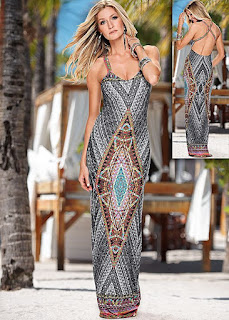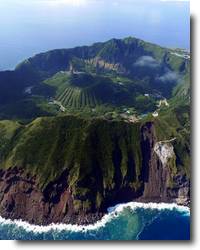10 fascinating things that probably no one told you about the Samurai
the samurai and their code of loyalty always exerted a fascination too big, especially in the Western world. However, some historical quirks of these legendary figures are still unknown and obscure. See now some curious facts surrounding the life and the routine of those Japanese warriors so famous.
1. Women could be "samurai" (onna-bugeishas) Creative Commons Creative Commons in the samurai families, it was tradition that women receive training in martial arts and war strategies, so that they could defend their families when he wasn't present. Known as onna-bugeishas, they participated in battles alongside men and fought using the naginatas (Spears with a curved blade on the tip). The bow and arrow was also a gun a lot used by the "women-warriors".
Despite warlike abilities, they dressed with luxurious fine silk kimonos and were always wearing make-up, with impeccable hair, demonstrating special care in the preservation of her femininity.
The historical texts contain few references to these warriors, but they have been more numerous than people think. Analyses on the location where the battle of Senbon Matsubaru, in the year 1580, showed that of the 105 bodies found, 35 were women.
Tomoe Gozen was one of the most famous warriors whose history was recorded. She was the wife of Minamoto Yoshinaka, Minamoto clan. Born in 1157 in a samurai family, she was trained to handle the naginata and protect the family. Fought in the Genpei War (1180-1185), a dispute that lasted 5 years between the Taira and Minamoto clans for control of Japan.
2. The armor does not limit the movements photo: Felice Beato photo: Felice Beato the armor of the Samurai, whose weight could range from 5 to 40 kg, were made with leather, wood or metal and covered the entire body of the Warrior. They suffered changes according to the historical period, the clan and the samurai class. However, contrary to what it looks like, they were intended to preserve the freedom of movement, as essential for the fights and the handling of the weapons.
The helmet, called a Kabuto, was designed to protect the neck of arrows and sword attacks from multiple angles. They were also a symbol of power and status of the samurai. There are those who defend the thesis that the kabuto Samurai inspired the mask used by Darth Vader in Star Wars.
Demonic appearance of the masks already served a dual purpose: to protect the face of the Warrior and frighten the enemy
. Existed, at least, a black samurai ... Creative Commons yasuke (illustrative) in late 16 century, Oda Nobunaga, the most powerful warlord of Japan, had an African slave who was not only a cultural curiosity, but also his bodyguard and that reached enough prestige among the Japanese at that time.
He was known as Yasuke, but nobody knows his real name. Listed in one of the reports that would have about a 1.90 Yasuke high and, if so, their stature would have been very impressive for the Japanese at the time. Nobunaga did not believe that black skin was real and suspected that the Jesuits, with whom the African came to Japan, were trying to nail a piece.
He ordered his vassals wash, Yasuke after seeing that nothing would change in the skin of African, Nobunaga became convinced that there was no deception. Delighted by the discovery, Jesuit Yasuke if you managed to put at your service. The rumors were that the slave was going to be made a Daimyo (Japanese feudal Lord).
Specifically, however, the Jesuit records reveal that Nobunaga gave Yasuke a House and a katana sword, a weapon that only the Samurai her graceful hands managed. Nobunaga also gave it the distinction of carrying his spear and staff wear a suit of armor, that privilege was reserved only for those born in samurai families.
4. ... and some foreigners
. Historical records indicate that at least four Westerners had the honor of becoming a Samurai: the English adventurer William Adams and his fellow Dutchman Jan Joosten van Lodensteijn; the French Navy officer Eugene Collache and the gun dealer Edward Schenell, from Prussia.
The movie the last Samurai, starring Tom Cruise in 2003, was based on the story of two men who really existed, but they become Samurai. They were Frederick Townsend Ward and Jules Brunet.
At the time of gold of the Samurai, they reached around 10% of the population of Japan. Because they are so numerous, there is a theory that every Japanese citizen has at least a little bit of "samurai blood."
This became a problem when the Samurai class was eradicated, circa 1870. Without a job, some were forced by necessity to become traders, a class that has always been considered less than themselves.
The clothes of the Samurai should reflect the respect that was due by other social classes. However, allied to this, they should also facilitate sudden fights. The pants, called kamishimo, were large and allowed unlimited mobility. The length prevented the enemy could see the position of the legs of the Warrior, which guarantee the "element of surprise" in wrestling.
There are two types of hakama: umanori and oandon. The umanori, meant to be used when riding, it seems a common pants, but with legs well apart. The andon doesn't have the legs apart and was used during peacetime.
Another curiosity about the hakama is that he presents seven folds: five in front and two behind. The folds representing the seven virtues of Bushido (bushi = Warrior and the = path): Righteousness (gi), courage (yu), benevolence (jin), respect (King), honesty (shin), honor (meiyo) and loyalty (chugi).
The kimono, usually used underneath the hakama, was made of silk, noble, malleable and lightweight fabric. On the feet, they used the waraji sandals, which were made of braided rice straw. Also used the tabi which were socks with split fingers, to facilitate the use of the waraji.
The fingers separated are widely used in modern day Japan. The hakama are also used frequently in modern martial arts presentations.
The Samurai wore not only the traditional sword and katana most commonly associated with the image of the Warrior. The range of weapons they carried varied from daggers to Spears and the best known are: Waikisashi, a short sword that varied from 30 to 60 cm blade that, when used in conjunction with the katana was called seDaisho and identified that its wearer was a samurai; So much was a dagger that tied the set of weapons used by the samurai. Was employed in simple tasks or to the ritual of sepakku (suicide).
A number of other more specific and sophisticated weapons were used by warriors in their daily life and in the fields of battle
The Bushido code provided that the Samurai should study various subjects who had no direct relationship with the battles. They need to be prepared for any eventuality or adversity and the knowledge acquired allowed if highlight in society.
Were started in arts such as literature, poetry, painting, music, gardening and floral arrangements. In addition, they had a deep understanding of mathematics, history and impeccable handwriting practice
According to the various historical records, the real Samurai who lived in the 16 century had, on average, between 1, 60 m and 1, 65 m tall. Compared to the European Knights, who had average height of 1, 80 m to 1, 96 m that represented a big difference, but also guarantee a lot of agility in the body fights.
It is also believed, based on historical records, many Samurai descended from ainu ethnic group. This ethnicity had the characteristic of having more body hair and lighter skin than the majority of the Japanese population of the time.
As a way of regaining lost honor, the samurai could practice sepukku or, as is commonly known in the West, harakiri. The ritual was part of a very elaborate ceremony and usually performed in front of spectators.
In a more informal, the Warrior could cut his own stomach with his sword and then being beheaded by a partner or friend, to lessen the pain. In the classic version, the Warrior dressed in white, ate a last meal specially prepared and wrote a poem before he killed himself.
Seppuku was a extremely slow and painful process of suicide that served to demonstrate the courage, self-control and the strong determination of the samurai, who chose to die in a blaze of glory rather than fall into the hands of the enemies. As a result, it was not uncommon that the ritual lasted long hours as proof that courage.
Officially, practicing sepukku was abolished in 1868.


